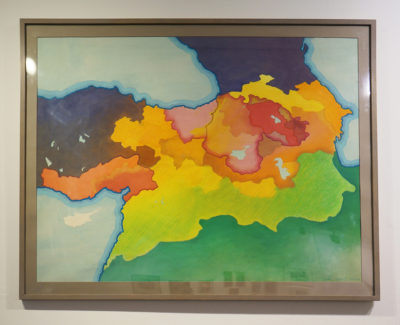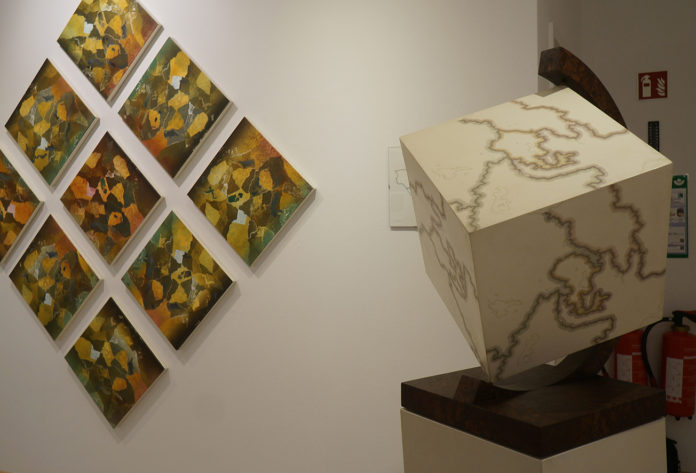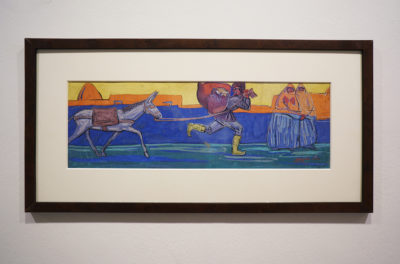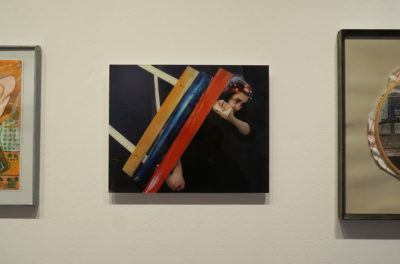BERLIN — What does it mean to be Armenian? What is Armenia’s national identity? How do its citizens perceive it? And those in the diaspora?
Over the last 30 years, the country and its people have experienced political upheaval through the collapse of the Soviet Union, the subsequent economic crisis and years of war, decades of struggle to shape a new self-conception and define a meaningful role in the regional and international context. The most recent phase of transformation, ushered in by the “Velvet Revolution” three years ago and followed by the catastrophic 2020 war in Nagorno-Karabakh, remains open, more questions raised than answered.

In this context, the German-Armenian Cultural Days opened in Berlin under the rubric, “Armenian Identity and its Roots.” Organized by the Association of the European and Armenian Experts e.V. (AEAE), the initiative enjoys the patronage of Michael Grunst, mayor of Berlin-Lichtenberg, and the support of the Lichtenberg District Office for Art and Culture, the Kulturhaus Karlshorst, the Paul Gerhardt Evangelical Parish in Berlin-Karlshorst, former Parliamentarian Prof. Martin Pätzold and the Galerie InteriorDAsein Berlin (www.InteriorDAsein.de).
The program opened on May 2 with a vernissage of an exhibition at the Kulturhaus Karlshorst, curated by artist and collector Archi Galentz. The exhibition, which is accessible (at least initially) only online, due to the continuing pandemic, constitutes the unifying feature of the cultural days, which will continue until June 6. As Mikayel Minasyan, chairman of the AEAE, put it, Armenia is passing through its deepest crisis since independence, and needs support to launch a new beginning. Why the focus on Armenian identity? Because identity is the characteristic providing stability, essential for starting anew.
“Six Facets of Self-Examination” is the name of the show and these facets are articulated in six areas: Landscapes, Language and Script, Church, State, Poetry of Ethnography and Hope. Through this thematic organization, certain fundamental questions are addressed, like Tradition, Limits of Communication as defined through language; Forced Innovation especially as dictated in the cultural realm by globalization; Injured Sense of Justice, as a distraction from self-consciousness; Appeal — to stress the socially shaping character of modern art terms — and, finally, Hope, as the motor force for vital changes.
The participating artists, from the Republic of Armenia as well as the diaspora, engage in a lively dialogue on these themes, with constellations of paintings, drawings, posters, prints and objects. Among the landscapes is “Bari Kentan” by Hakob Kodjoyan, 1946, gouache on paper, and a pencil “Portrait of Abo Parsemyan,” 1960, by the legendary Minas Avetisyan. One work treating Language and Script is “Alphabet” by Narine Khachaturyan, 2005, gouache on paper. “Arzni Church” and “Gandzasar Cloister” by Zaven Sargsyan, from 2000 and exposures on photo paper, appear on the wall space dedicated to the theme of the Church, and Narine Zolyan’s untitled photo under acryl and metal, 2010, expresses Hope. There are historically charged items illustrating the theme State, like a T-shirt with the slogan “I am Vahe Avetyan,” 2012, which refers to the violent death of a military doctor; an Armenian coat of arms in a studio frame, 2018, and an original baseball cap with “Duhkov” (“full of enthusiasm”) from the revolutionary year 2018.





